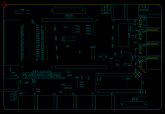I didn't have time to do a lot today but I researched about what mosfets I'll use for the disconnect ?
The best (including cost/perfs ratio) one I was able to find is this one:
https://www.mouser.fr/ProductDetail/ON-Semiconductor-Fairchild/FDBL86361-F085?qs=sGAEpiMZZMshyDBzk1/Wi/D7Em5shE8q79oNeZh9OawirCDuGpIRaw==
For thermal reasons I'd need 6 to 8 mosfets (depends on the heatsinking which is dependent on a lot of things; need to do real world testing for this one) per side as I want bidirectional capability (so total = 2 times that).
Then the question is about the short-circuit current I want to be able to handle. This mosfet can handle almost exactly 1 kA for 10 µs (for Tc = 100 °C, it can handle 1.4 kA at Tc = 25 °C but 25 °C is not realistic...) and unfortunately the curve doesn't go below 10 µs but looks like it's mostly linear in this region with a slope af about 30 A/µs. So for example for 5 µs (probably around what we can expect worst-case for the actual BMS design) it would be 1400 + (5 * 30) = 1450 but we need to apply the temp derating: 1450 * 0.707 = 1096 or a hair less than 1.1 kA.
So if we take the 14 kA example of a few pages earlier we need 13 (26 total) mosfets. At a bit more than 3 USD/each that is about 80 USD for the 26 mosfets. I don't know what you think about that but that's a bit too much for me. I guess I'll lower the short-circuit rating to 10-11 kA to have only 2x 9 or 10 mosfets (55-60 USD).
On the other hand I don't even know what the short circuit current will be because I don't have the cells yet so I can't measure the real DC internal resistance (the 14 kA figure was based on the AC measured internal resistance in the datasheet of the cell + some realistic length of wire), I have a slight hope it'll be lower than my estimation so I can use less mosfets...
If someone thinks he can find a better (lower cost/perfs ratio for at least the same perfs) mosfet for the task (Bvdss: 70 V min, 80 V or more preferred; Vgs: +/- 10 V min, +/- 15 V or more preferred; Rdson: don't care as long as the total dissipation of the whole disconnect at 300 A is less than 30-35 W; don't care about the package: can be SMD, TH, ...) he is very welcome ?
BTW: based on these results it's interesting to see that a classic ready-made BMS stands [almost] no chance to survive a short-circuit as it'll use far less robust mosfets (and probably not from a top tier manufacturer either) and rely on software (very slow compared to hardware) to detect an over current situation.







